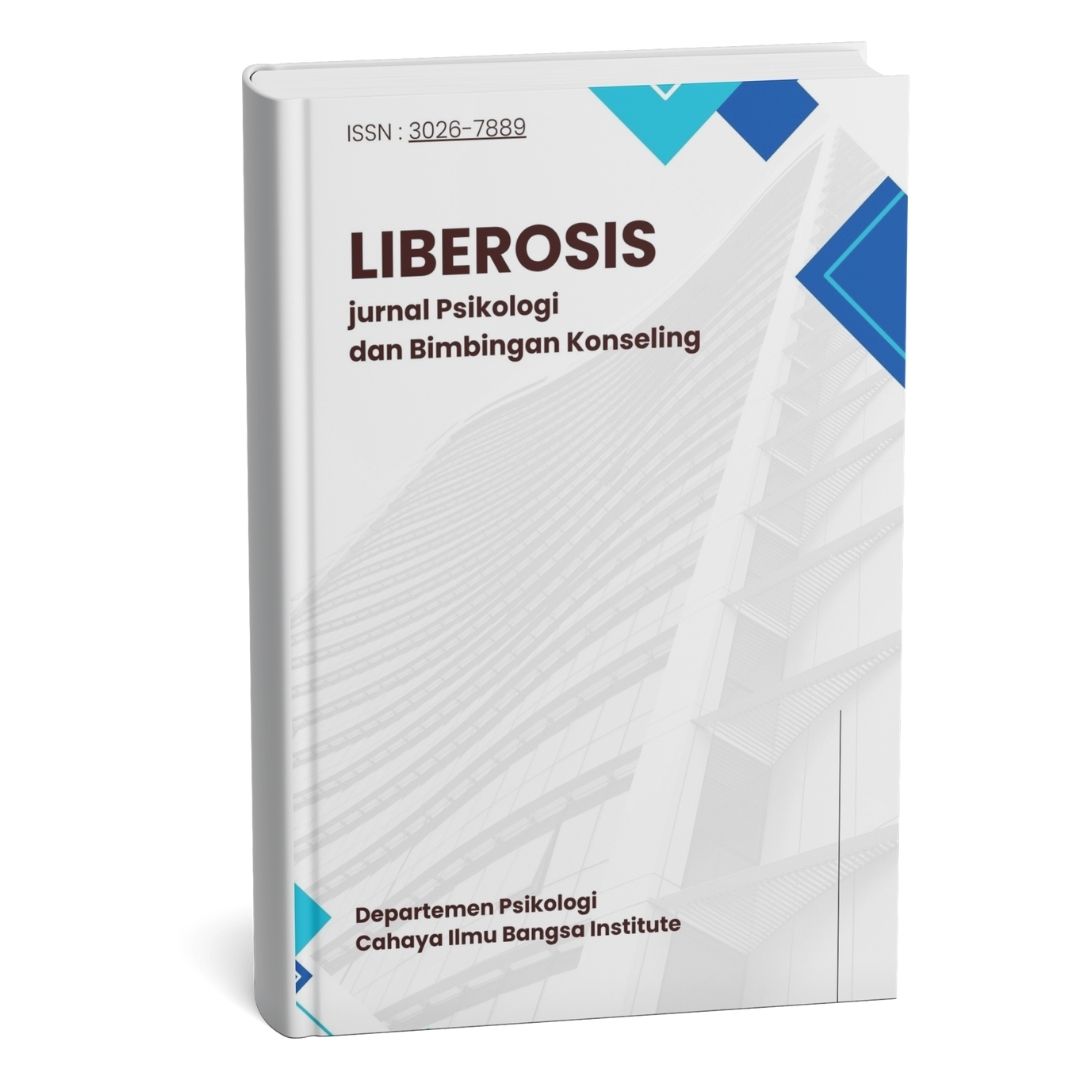Abstract
This study aims to determine the relationship between Work-Life Integration (WLI) and Subjective Well-Being (SWB) in working students. The study used a correlational quantitative approach with a cross-sectional design and involved 54 students aged 18-25 years. The instruments used were Satisfaction With Life Scale (SWLS), Positive and Negative Affect Schedule (PANAS), and Work-Life Boundary Enactment scale. Spearman correlation analysis showed that there was no significant relationship between WLI and overall SWB (rₛ = -0.037; p = 0.792). However, a significant positive relationship was found between WLI and life satisfaction, as well as negative affect, and a significant negative relationship between WLI and affect balance (PA-NA). These findings suggest that high role integration does not necessarily reflect good psychological well-being. Future research is recommended to consider the role of burnout or other variables as mediators in the relationship between WLI and SWB.
Penelitian ini bertujuan untuk mengetahui hubungan antara work-life integration (WLI) dan subjective well-being (SWB) pada mahasiswa yang bekerja. Penelitian menggunakan pendekatan kuantitatif korelasional dengan desain cross-sectional dan melibatkan 54 mahasiswa usia 18–25 tahun. Instrumen yang digunakan yaitu Satisfaction With Life Scale (SWLS), Positive and Negative Affect Schedule (PANAS), dan skala Work-Life Boundary Enactment. Analisis korelasi Spearman menunjukkan bahwa tidak terdapat hubungan signifikan antara WLI dan SWB secara keseluruhan (rₛ = -0,037; p = 0,792). Namun, ditemukan hubungan positif signifikan antara WLI dan kepuasan hidup, serta afek negatif, serta hubungan negatif signifikan antara WLI dan keseimbangan afek (PA–NA). Temuan ini menunjukkan bahwa integrasi peran yang tinggi belum tentu mencerminkan kesejahteraan psikologis yang baik. Penelitian selanjutnya disarankan untuk mempertimbangkan peran burnout atau variabel lain sebagai mediator dalam hubungan antara WLI dan SWB.
References
Akhtar, H. (2019). Evaluasi Properti Psikometris Dan Perbandingan Model Pengukuran Konstruk Subjective Well-Being. Jurnal Psikologi, 18(1), 29-40. https://doi.org/10.14710/jp.18.1.29-40
Allen, T. D., Cho, E., & Meier, L. L. (2014). Work–family boundary dynamics. Annual Review of Organizational Psychology and Organizational Behavior, 1, 99–121. https://doi.org/10.1146/annurev-orgpsych-031413-091330
Ario, T. S. (2020). Problematika pada individu pekerja paruh waktu. https://eprints.ums.ac.id/82213/10/NASKAH%20PUBLIKASI.pdf.
Astuti, P. D., Nurcahyo, R. W., & Kristiana, I. F. (2020). Burnout pada individu pekerja ditinjau dari beban kerja dan dukungan sosial. Jurnal Psikologi Ulayat: Indonesian Journal of Indigenous Psychology, 7(1), 39–52. https://doi.org/10.24854/jpu2020-270
Badan Pusat Statistik. (2020). Statistik pendidikan 2020. https://www.bps.go.id/publication/2020/12/29/0f0a75e8a90e453cd69b0c1c/statistik-pendidikan-2020.html
Databoks. (2021, Agustus 5). 6,98% pelajar usia 10–24 tahun di Indonesia bekerja sambil sekolah. Katadata. https://databoks.katadata.co.id/datapublish/2021/08/05/698-pelajar-usia-10-24-tahun-di-indonesia-bekerja-sambil-sekolah
Dewi, L., & Nasywa, N. (2019). Faktor-faktor yang mempengaruhi Subjective Well-Being. Jurnal Psikologi Terapan dan Pendidikan.
Diener, E. (1984). Subjective well-being. Psychological Bulletin, 95(3), 542–575. https://doi.org/10.1037/0033-2909.95.3.542
Diener, E. (2006). Guidelines for national indicators of subjective well-being and ill-being. Journal of Happiness Studies: An Interdisciplinary Forum on Subjective Well-Being, 7(4), 397–404. https://doi.org/10.1007/s10902-006-9000-y
Diener, E. (2008). The science of Subjective Well-Being: The collected works of Ed Diener. Springer.
Diener, E., Oishi, S., & Tay, L. (2018). Advances in subjective well-being research. Nature Human Behaviour, 2(4), 253–260. https://doi.org/10.1038/s41562-018-0307-6
Diener, E., Scollon, C. N., & Lucas, R. E. (2009). The evolving concept of subjective well-being: the multifaceted nature of happiness. In E. Diener (Ed.), Assessing well-being: The collected works of Ed Diener, 67-100. Springer
Diener, E., Suh, E. M., Lucas, R. E., & Smith, H. L. (1999). Subjective well-being: Three decades of progress. Psychological bulletin, 125(2), 276. https://doi.org/10.1037/00332909.125.2.276
Jannah, M. (2018). Metodologi Penelitian Kuantitatif Untuk Psikologi. Surabaya: Unesa University Press.
King. L. A. (2014). Psikologi Umum: Sebuah Pandangan Apresiatif.
Kossek, E. E., Ruderman, M. N., Braddy, P. W., & Hannum, K. M. (2012). Work–nonwork boundary management profiles: A person-centered approach. Journal of Vocational Behavior, 81(1), 112–128. https://doi.org/10.1016/j.jvb.2012.04.003
Maslach, C., & Leiter, M. P. (2016). Understanding the Burnout Experience: Recent Research and Its Implications for Psychiatry. World Psychiatry, 15, 103-111.
https://doi.org/10.1002/wps.20311
Rahmawati, A. (2023). Hubungan Work Life Integration dengan Subjective Well-Being Karyawan di DKI Jakarta. https://doi.org/10.17605/OSF.IO/WVSJP
Rahmawati, R., & Herlina, T. (2020). Manajemen waktu, dukungan sosial, dan subjective well-being pada individu pekerja. Jurnal Psikologi Insight, 2(2), 75–85. https://doi.org/10.22515/insight.v2i2.2345
Wepfer, A. G., Allen, T. D., Brauchli, R., Jenny, G. J., & Bauer, G. F. (2018). Work-life boundaries and well-being: Does work-to-life integration impair well-being through lack of recovery? Journal of Business and Psychology, 33(6), 727–740. https://doi.org/10.1007/s10869-017-9520-y
